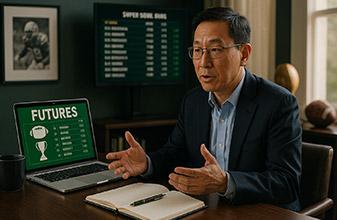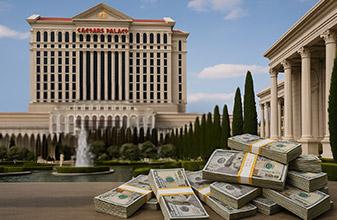Positive EV Hands

On Green Chip, there was a question by raswar17 about a blackjack sidebet called "House Money" -- see below for detailed rules.
In short, the player places a sidebet that his hand will consist of one of these two-card hands, with the indicated payouts:
- A-K suited: 9 to 1
- Straight Flush: 4 to 1
- Pair: 3 to 1
- Straight: 1 to 1
After the dealer deals the cards, the sidebets are settled. Then, if the dealer does not have a natural, any player who has won the sidebet has the option to take his sidebet winnings and original sidebet wager and add them to his regular BJ wager.
Thus, for example, say you bet $50 on BJ and $10 on the SB, and are dealt suited A-K vs. the dealer's 6. You'd win $90 on the SB, then have the option to add $100 (the original $10 SB wager plus the $90 in SB winnings) to your $50 BJ wager. Obviously, that's the perfect opportunity for you, since your BJ has already beaten the dealer's hand. So you add the $100 to your $50, and then get paid $225 more for a $150 BJ... woohoo, you're playing with "House Money" now!
raswar17 wondered for which hands should the player "add".
Well, the answer is obvious: the player should "add" any time his two-card hand versus the dealer's upcard is +EV. But that begs the question: which starting hands are +EV, and how does the answer change as the TC changes?
To answer this, I decided I needed to know the Initial Betting Advantage ("IBA") for each starting total vs. each dealer's upcard as a function of the "minimum TC" (more on this below).
As usual, raswar17 failed to provide all of the information needed, so I assumed the game is 6D, H17. I picked H17 because the PDF file linked below shows H17 on page 5.
I then ran 21 one-billion-round CVData sims that had one "average" player playing all, and a wonger using B.S. (but with HiLo tags). Each sim had a different "minimum TC" (MTC), below which the wonger would not play. Thus, for negative MTC's, the wonger would start each shoe at the shuffle and wong out whenever the TC got too low. For positive MTC's, the wonger would backcount and only play when the TC reached or exceeded the MTC.
The first sim was "play-all"; the next 20 sims corresponded to MTC's of -10, -9, -8, ..., -1, +1, +2, ..., +10. Thus, the "-10" sim was very nearly "play-all", since the TC rarely fell below -10. On the other hand, the "+10" sim saw the wonger play a grand total of 809,235 hands in one billion rounds.
I then copied the IBA table from CVData for each sim and pasted each into a separate worksheet in Excel. I named each worksheet as its MTC, so I ended up with worksheets named "All", "-10", "-9", etc. I then created a new "Analysis" worksheet and told Excel to look at each starting total vs. each upcard, and determine for which ones the IBA changed sign. This was easier than it sounds. For example, the hand 17 vs. 6 ended up in cell F18 on each worksheet. Thus, the formula in cell F18 on the Analysis worksheet was as follows:
=MAX(All!F18,'-10'!F18,'-9'!F18,'-8'!F18,'-7'!F18,'-6'!F18,'-5'!F18,'-4'!F18,'-3'!F18,'-2'!F18,'-1'!F18,
'+1'!F18,'+2'!F18,'+3'!F18,'+4'!F18,'+5'!F18,'+6'!F18,'+7'!F18,'+8'!F18,'+9'!F18,'+10'!F18)
*MIN(All!F18,'-10'!F18,'-9'!F18,'-8'!F18,'-7'!F18,'-6'!F18,'-5'!F18,'-4'!F18,'-3'!F18,'-2'!F18,'-1'!F18,
'+1'!F18,'+2'!F18,'+3'!F18,'+4'!F18,'+5'!F18,'+6'!F18,'+7'!F18,'+8'!F18,'+9'!F18,'+10'!F18)
.
In other words, find the Maximum IBA and the Minimum IBA for 17 vs. 6, then multiply them together. If the product is NEGATIVE, then the IBA changes sign; if positive, then the IBA does NOT change sign.
******************** DIGRESSION ALERT **************************
Note that I had to modify the IBA's for dealer upcards of X and A, since CVData reports the IBA before the dealer checks for BJ, but according to the House Money rules, we don't have the opportunity to "add" if the dealer has a BJ.
For example, on the +6 page, the IBA for AT vs. A is 96.10%. (Note that, since this is less than 100%, we take "even money" when we're dealt a BJ vs. an A at a TC of +6.) The reason it isn't 150% is that the dealer has a pretty good chance of having a BJ. How good a chance you ask? Well, we can write:
EV(before) = 150%*(1-PX)
where "EV(before)" is the EV before the dealer checks for BJ, that is, it's the IBA value CVData reports: 96.10%, and "PX" is the probability that the dealer's hole card is an X (and thus the dealer also has a BJ). Rearranging allows us to solve for PX as
PX = 1 - EV(before)/150%
So, for our example, we get
PX = 1 - 96.1%/150% = 0.3593...
So, when the TC (at the beginning of the round) is +6 or higher, the probability that the dealer's Ace upcard is hiding an X holecard is just under 36%.
Now, how did I use this information? Well, let's say we're dealt 19 vs. A at an initial TC of +6. If we check the CVData output, we see that EV(before) = IBA = -20.9%. Thus, it looks like we would NOT want to "add" here... but we have to check something first. Once the dealer checks and finds she does not have a BJ, what is our EV now?
Well, we can write
EV(before) = -100%*PX + EV(after)*(1-PX)
where "EV(after)" is the EV when the dealer does NOT have a BJ, and the "-100%" is because, if she DOES have an X in the hole, our EV would be -100%.
We can rearrange this to get the desired result:
EV(after) = [EV(before)+100%*PX]/(1-PX)
Since we found that PX here is 0.3593... and EV(before) = -20.9%, we can callculate EV(after) = +23.47...%.
Thus, in this case, we WOULD "add", since once the dealer does not have a BJ, our 19 vs. A is a +EV hand!
******************** END OF DIGRESSION ************************
Finally, I looked at all the hands for which the IBA (or modified IBA for X and A, as described above) changes the sign to see at what TC's the hands are +EV.
The table below shows each starting total and each dealer's upcard. For dealer upcards of 10 and Ace, I show two sets of columns: the first set is for the "normal" rules, where the dealer checks for her own BJ before allow you to "add"; the second is if she allows you to "add" before she checks for her own BJ.
If the entry says "Y", then always "add".
If the entry says "N", then never "add".
If the entry says ">=#", then "add" when the TC is greater than or equal to the number shown.
If the entry says "<=#", then "add" when the TC is less than or equal to the number shown.
Note that I didn't use any of the results for MTC's above +6, because the limited number of data points means the uncertainty in the IBA results is very high.
If you look at the table, you'll see some surprising results.
For example, after the dealer checks for BJ, a total of 19 is almost always +EV, the sole exception being vs. an X at high TC.
I was also surprised that 17 is +EV vs. 4, 5, and 6 when the TC is high enough... in an H17 game, I always thought 17 was always a -EV hand.
| No BJ | No BJ | Before | Before | |||||||||
|---|---|---|---|---|---|---|---|---|---|---|---|---|
| 2 | 3 | 4 | 5 | 6 | 7 | 8 | 9 | 10 | Ace | 10 | Ace | |
| 5 | N | N | >=+3 | >=+1 | Y | N | N | N | N | N | N | N |
| 6 | N | N | >=+4 | >=+1 | Y | N | N | N | N | N | N | N |
| 7 | N | N | >=+2 | Y | Y | N | N | N | N | N | N | N |
| 8 | >=+1 | Y | Y | Y | Y | Y | N | N | N | N | N | N |
| 9 | Y | Y | Y | Y | Y | Y | Y | N | N | N | N | N |
| 10 | Y | Y | Y | Y | Y | Y | Y | Y | Y | Y | N | N |
| 11 | Y | Y | Y | Y | Y | Y | Y | Y | Y | Y | Y | N |
| 12 | N | N | N | N | N | N | N | N | N | N | N | N |
| 13 | N | N | N | N | N | N | N | N | N | N | N | N |
| 14 | N | N | N | N | N | N | N | N | N | N | N | N |
| 15 | N | N | N | N | N | N | N | N | N | N | N | N |
| 16 | N | N | N | N | N | N | N | N | N | N | N | N |
| 17 | N | N | >=+4 | >=+2 | >=+1 | N | N | N | N | N | N | N |
| 18 | Y | Y | Y | Y | Y | Y | Y | N | N | N | N | N |
| 19 | Y | Y | Y | Y | Y | Y | Y | Y | <=+5 | Y | N | N |
| A2 | Y | Y | Y | Y | Y | Y | <=+5 | N | N | N | N | N |
| A3 | Y | Y | Y | Y | Y | Y | <=-1 | N | N | N | N | N |
| A4 | N | Y | Y | Y | Y | <=-1 | N | N | N | N | N | N |
| A5 | N | Y | Y | Y | Y | N | N | N | N | N | N | N |
| A6 | >=+1 | Y | Y | Y | Y | Y | N | N | N | N | N | N |
| A7 | Y | Y | Y | Y | Y | Y | Y | N | N | N | N | N |
| A8 | Y | Y | Y | Y | Y | Y | Y | Y | <=+5 | Y | Y | Y |
| A9 | Y | Y | Y | Y | Y | Y | Y | Y | Y | Y | Y | Y |
| AT | Y | Y | Y | Y | Y | Y | Y | Y | Y | Y | Y | Y |
| AA | Y | Y | Y | Y | Y | Y | Y | Y | Y | Y | Y | N |
| 22 | N | N | Y | Y | Y | <=+2 | N | N | N | N | N | N |
| 33 | N | >=+1 | Y | Y | Y | N | N | N | N | N | N | N |
| 44 | >=+2 | Y | Y | Y | Y | Y | N | N | N | N | N | N |
| 55 | Y | Y | Y | Y | Y | Y | Y | Y | Y | Y | N | N |
| 66 | N | >=+2 | Y | Y | Y | N | N | N | N | N | N | N |
| 77 | >=+5 | >=+1 | Y | Y | Y | N | N | N | N | N | N | N |
| 88 | Y | Y | Y | Y | Y | Y | >=+3 | N | N | N | N | N |
| 99 | Y | Y | Y | Y | Y | Y | Y | N | N | N | N | N |
| TT | Y | Y | Y | Y | Y | Y | Y | Y | Y | Y | Y | Y |
Note that this table has one additional use.
Say the dealer commits a procedural error, and the floorman asks you if you wish to play the hand (and accept the results) or throw out the hand and take back your wager. Here again, if the hand is +EV you want to play it, while if it's -EV you want to retract it. (I have often seen this offer from pit personnel. Thus, it's good to know when you have the edge.











Please log in or register to leave a comment